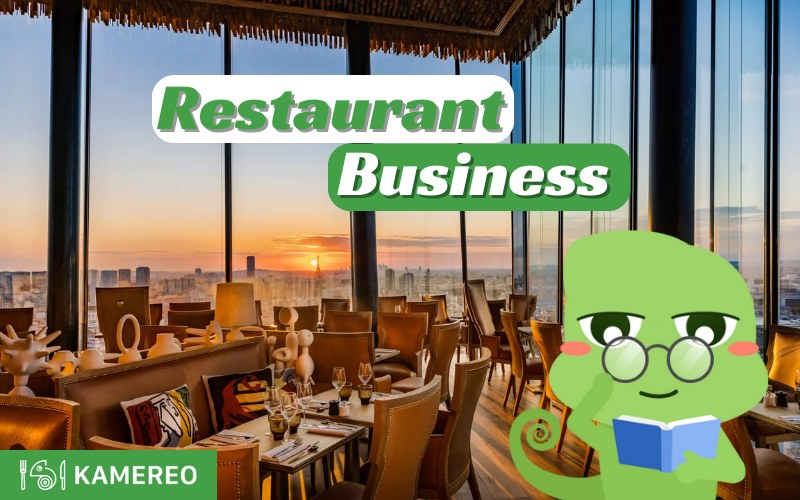Starting a restaurant business is a popular entrepreneurial trend among many young individuals, offering significant revenue potential, especially in tourist destinations. However, not everyone succeeds in the restaurant business. In this article, let’s delve into the secrets of running a successful food business with insights from Kamereo.
Table of Content
Table of Contents
- What is Restaurant Business?
- Key Features of Restaurant Business
- Steps to Start a Restaurant
- Step 1: Conceptualize the Business Model
- Step 2: Market Research and Target Customer Identification
- Step 3: Capital Investment for Opening a Restaurant
- Step 4: Choosing a Restaurant Location
- Step 5: Design and Decorate the Restaurant
- Step 6: Prepare Infrastructure and Equipment
- Step 7: Building a Menu for Your Restaurant
- Step 8: Professional Staff
- Step 9: Obtain Restaurant Business Licenses
- Step 10: Adhere to Food Safety Regulations
- Step 11: Implement Marketing Strategies
What is Restaurant Business?
Restaurant business involves providing food and entertainment services to customers with the aim of generating profit. Restaurants can serve dishes and beverages from various countries, regions, or specialize in a specific culinary style.
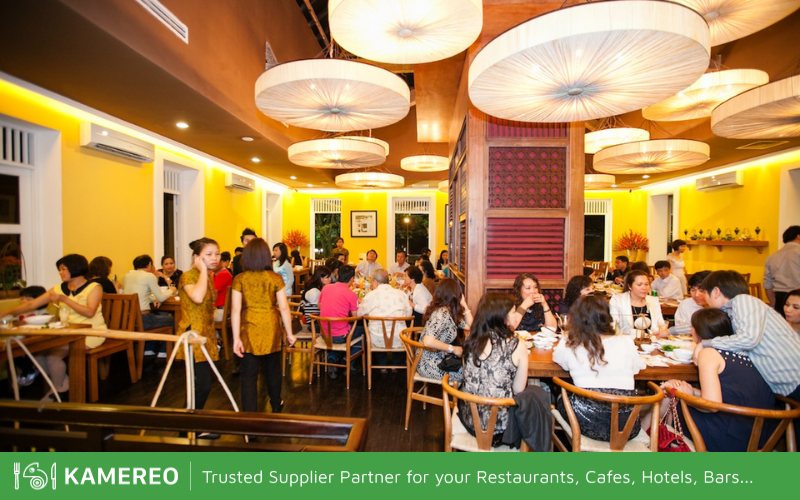
The restaurant industry presents substantial growth potential due to the essential nature of human dining needs. However, it is also a highly competitive field, requiring investors to understand the market, possess management experience, and have a solid investment capital.
Key Features of Restaurant Business
1. Food Business Dynamics:
Freshness and immediacy in food preparation are crucial. Daily delivery of ingredients for on-the-spot cooking.

2. Workforce Elements:
Service staff plays a vital role, interacting directly with customers. Each team member has a specific role that cannot be easily replaced.
3. Understanding Customer Behavior:
Diverse customer demographics with varying psychological traits and needs. In-depth research on customer segments for effective service.
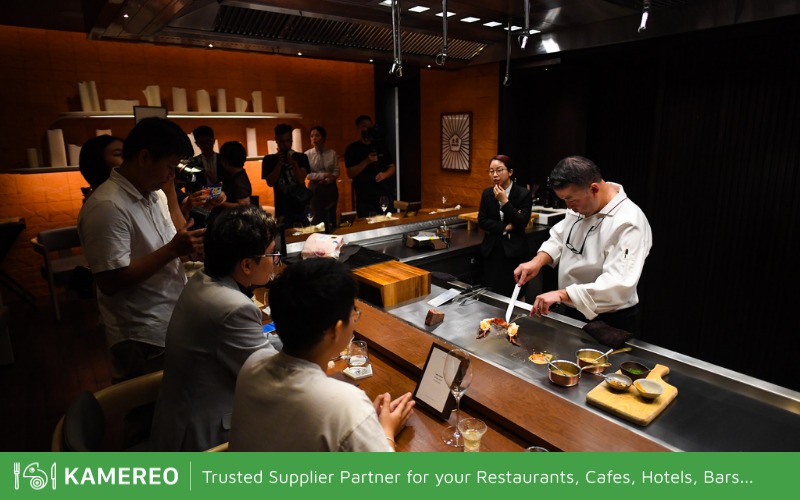
4. Service Environment:
Environment varies based on the chosen restaurant model. Small restaurants may provide a comfortable setting, while upscale ones demand professionalism and strict adherence to regulations.
Steps to Start a Restaurant
Successful restaurant owners often have talk shows advising on opening restaurants for newcomers or those who are passionate about this type of business. However, if you do not have time, please refer to the information about opening a restaurant and what needs to be prepared through the following steps:
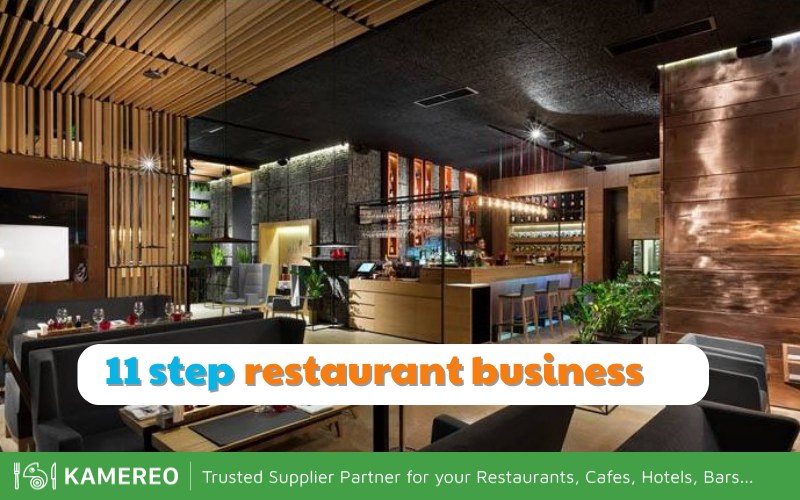
Step 1: Conceptualize the Business Model
Choose a restaurant type, such as hot pot, wedding banquet, seafood, vegetarian, or buffet. Tailor your concept to attract your target audience.
Hot Pot Restaurant:
Targets office workers, students, and young individuals. Location is crucial for attracting a larger customer base. Simplified ingredient preparation and diverse menu options.
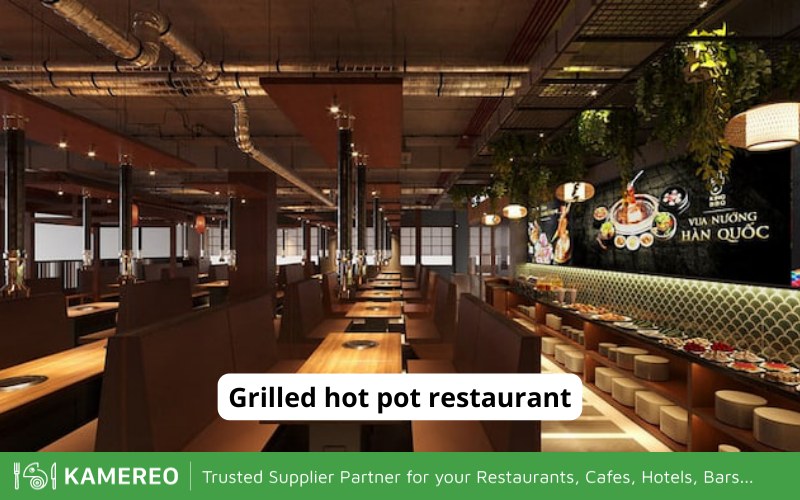
Wedding Banquet Restaurant:
High potential for capital recovery and profitability. Requires substantial investment in space and decoration. Focus on elegant decorations, spacious layouts, and efficient staff management.
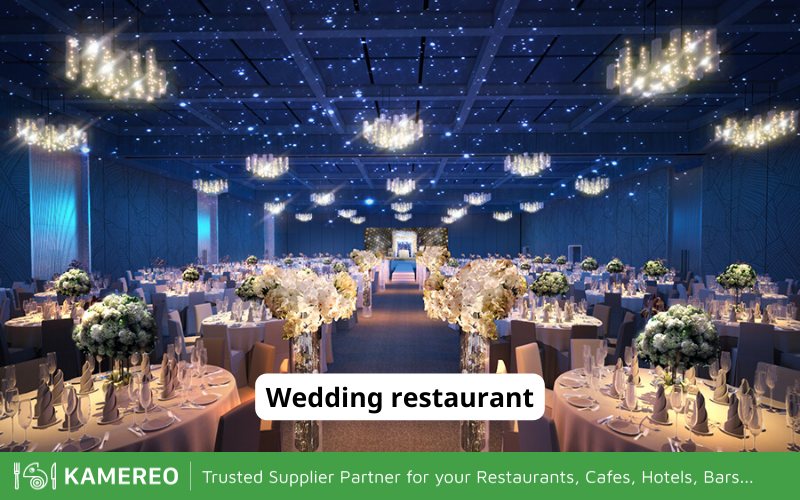
Seafood Restaurant:
Divided into seaside, affordable, garden-themed, and buffet styles. Emphasizes the importance of fresh seafood and efficient drink supply. Simpler design and set-up compared to other models.
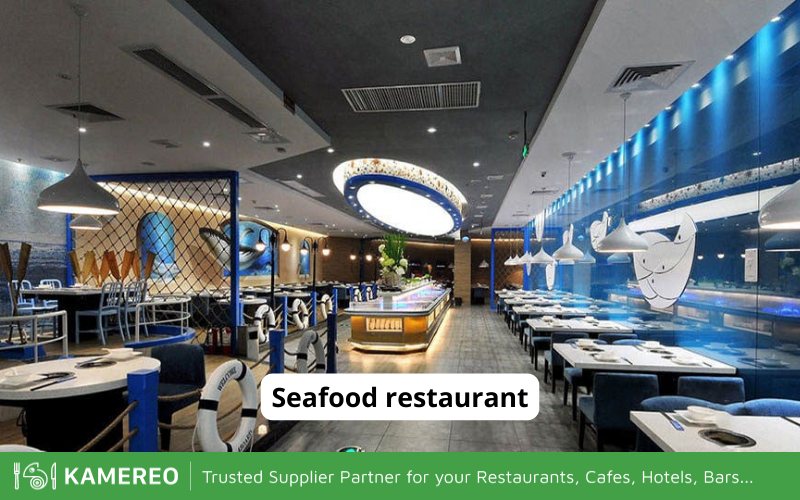
Vegetarian Restaurant:
Requires knowledge of vegetarian culinary culture. Focus on natural and warm interior design. Diverse and attractive menu options for customers.
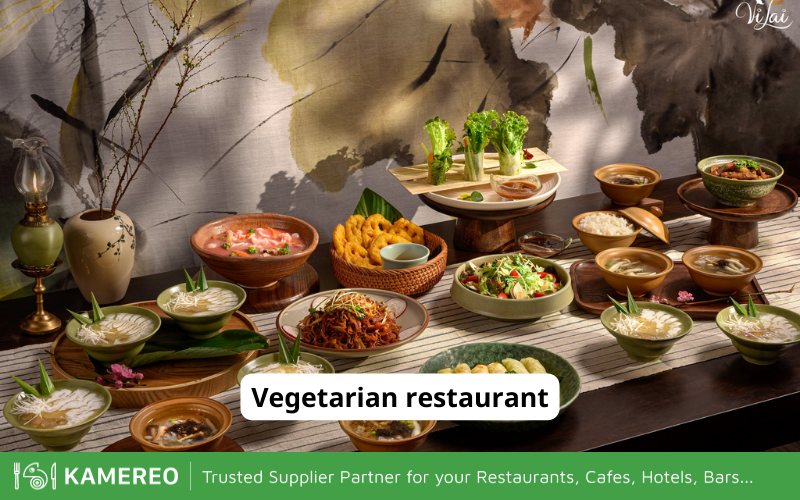
Buffet Restaurant:
Attracts a large customer base with self-service and diverse food offerings. Requires a minimum area of 300m2 in densely populated areas. Considerable investment for diverse menu options.
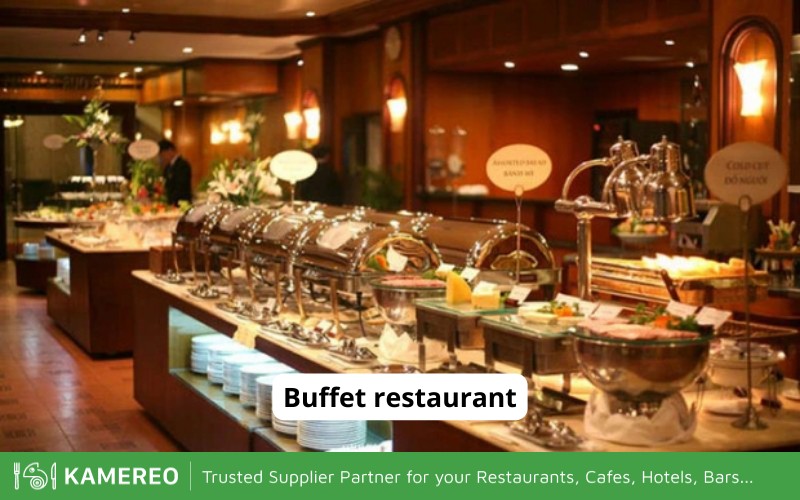
Step 2: Market Research and Target Customer Identification
Focus on 5-10% of the market that aligns with your chosen concept. Construct a detailed customer profile based on age, income, interests, and restaurant type preference. Analyze market needs and identify direct and indirect competitors.

Step 3: Capital Investment for Opening a Restaurant
Create a comprehensive budget plan covering kitchen area costs, furniture purchases, design expenses, and other necessary items. Pay special attention to rent costs and allocate funds wisely. Consider seeking additional funding through bank loans or investment funds if initial capital is insufficient.

Step 4: Choosing a Restaurant Location
Next, you need to select a suitable location for your restaurant to ensure a smooth business operation. Experts in the F&B industry emphasize that the location is the key to the success of a restaurant. Therefore, it’s crucial to choose a good and conveniently accessible location.
Based on the Target Customers
To choose the most suitable location for your restaurant, you need to clearly identify the target audience you want to attract. If your main target is office workers, then a location near office buildings would be a suitable choice. On the other hand, opening a restaurant near schools, dormitories, or entertainment areas might be a wise decision if you are targeting a younger audience, students, and teenagers.
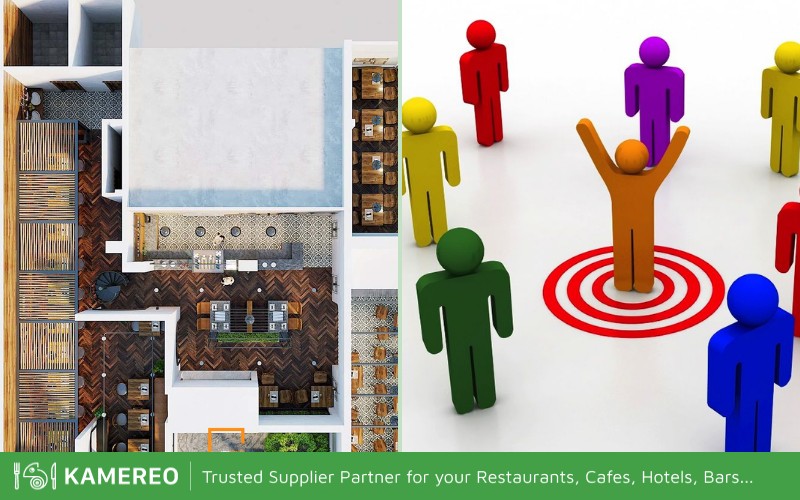
The selection of the restaurant’s location should align with the specific target customers you want to serve. Avoid opening a restaurant in distant locations where your target customers seldom visit, as it may not align with the style of your establishment.
Location of the Rental Space
Before deciding on a business location for your restaurant, conducting a thorough survey is indispensable. Walking around the area you are interested in will provide an overview of the business environment and competition in the area. Additionally, you can gain insights into the habits and routines of local residents, which can impact your business operations.
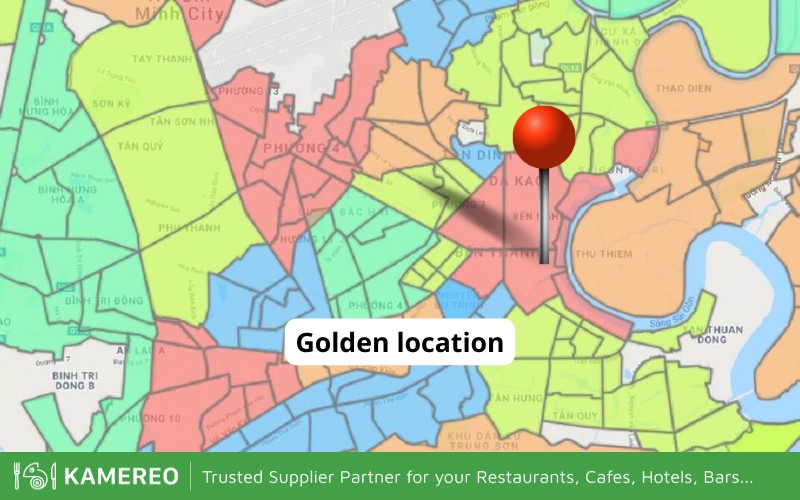
Furthermore, when planning your restaurant business, consider the frequency and density of foot traffic in the area. A location with a high volume of foot traffic will create favorable conditions for your business activities.
Size and Space of the Restaurant
In addition to a convenient location, the restaurant space needs to be designed to have adequate lighting and ventilation, especially on hot days. The interior decor should be unique, showcasing the creativity and aesthetic taste of the owner. This helps to gain a competitive edge over other establishments in the same field.
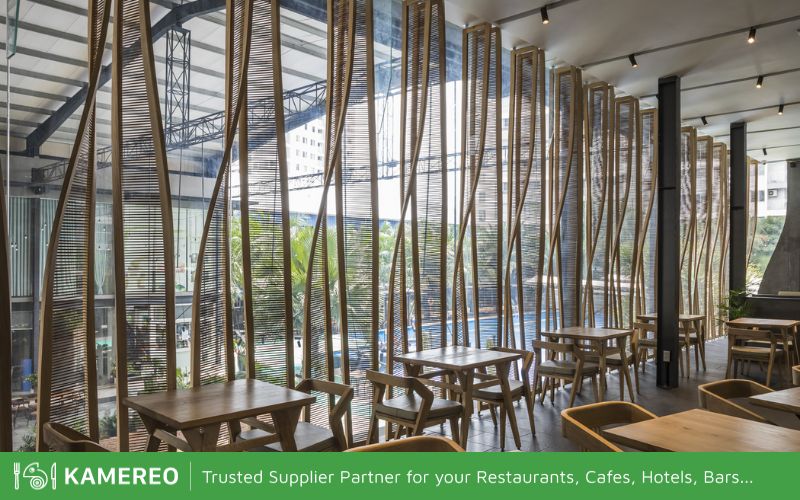
In the restaurant business plan, listing basic requirements is crucial for choosing the floor space. Your restaurant needs space for essential aspects such as customer seating, parking, drainage systems, emergency exits, etc. Additionally, special attention should be given to safety and the facilities of the kitchen area.
Rental Cost
Cost is one of the critical factors that directly influence the decision to choose a location. Therefore, determining a specific budget for the rental space will help you narrow down your search, saving time and effort in finding a suitable location.
Keep in mind that rental costs partially reflect the quality and location of the space. Prime locations in the city center often come with higher costs. Carefully balancing the quality of the location and financial resources will help you make a sensible decision.
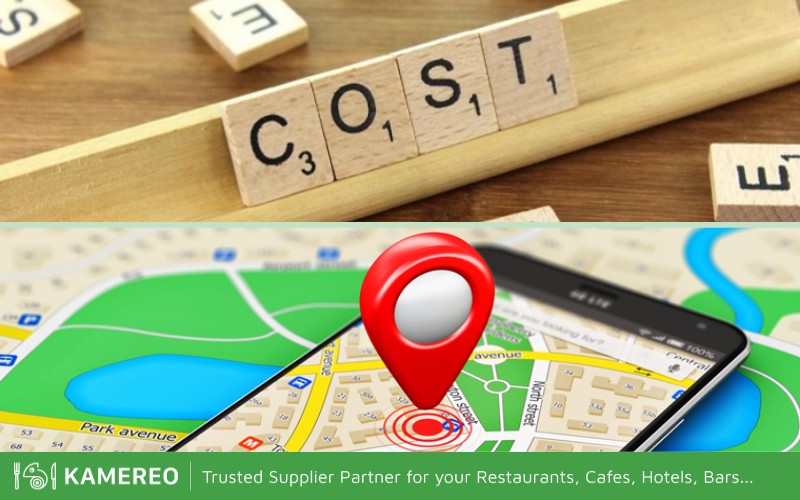
Relationship with the Landlord
Another crucial aspect when choosing a restaurant business location is the personality of the landlord. Evaluating the potential for long-term cooperation with them is extremely important. Therefore, choose a landlord with a good reputation and a positive cooperative attitude.
Avoid situations where landlords are unpredictable or prone to changes. This can pose risks to your restaurant business. It may even impact your finances if not prepared and thoroughly evaluated by the landlord.
Lease Agreement
When creating a lease agreement for your restaurant business, it’s advisable to start with a short leasing period, such as one or two years at most. In addition, the contract should be specific and stringent, with terms such as the time allowed for you to carry out repairs, a clause preventing rent increases, and conditions for compensation when returning the property.

To ensure transparency and fairness, the contract should also clearly define the risks and responsibilities for both parties. Including terms related to support from the landlord for community procedures and handling issues with utility providers is essential.
Step 5: Design and Decorate the Restaurant
When starting a restaurant project, determining the style and design standards in advance is crucial. This helps with choosing the right space and purchasing suitable furniture.
The interior space of the restaurant plays a crucial role and requires special attention. While there are various design styles, the most important thing is to ensure that the design style creates a dining space that reflects the essence of the restaurant.
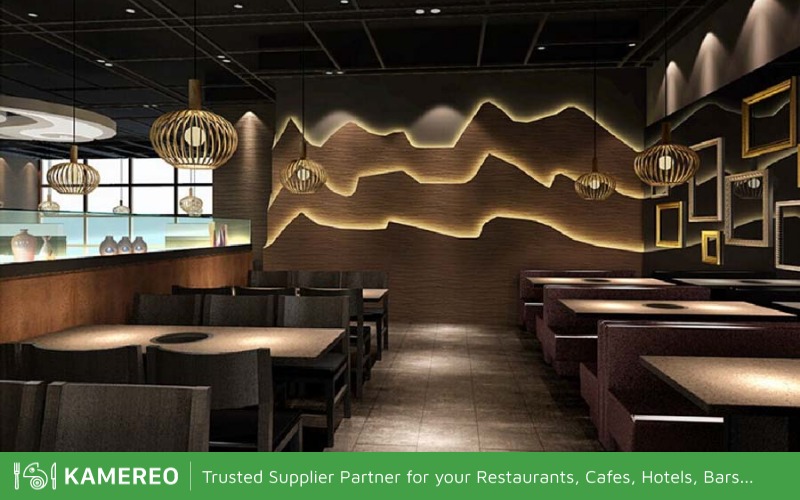
In addition, the selection of chairs and decorations should be harmonious. At the same time, the number of seats should be arranged reasonably to create a comfortable atmosphere without making the restaurant feel cramped. Colors and lighting also play a crucial role in elevating the dining experience.
Step 6: Prepare Infrastructure and Equipment
Continuing to address the question of what a restaurant needs, infrastructure and management software are two of the crucial factors determining success in restaurant business.
Infrastructure Required for the Restaurant
To meet industry standards, it’s essential to equip the restaurant with all necessary infrastructure. Key factors to consider include: chairs, lighting systems, electricity, water, and kitchen utensils. Additionally, three critical areas in the restaurant that require focus are the reception area, service area, and kitchen area.
Reception Area:
- Design a dedicated parking lot and unobstructed pathways.
- Create an eye-catching sign and spacious layout to highlight the restaurant.
Service Area:
- Estimate the maximum number of customers to shop for seats and tablecloths.
- Arrange dining tables, cashier counters, and beverage counters in a reasonable manner.
Kitchen Area:
- Design according to the one-way kitchen principle to ensure food safety.
- Carefully plan drainage mechanisms, oil and grease filtration, odor removal, and gas safety.
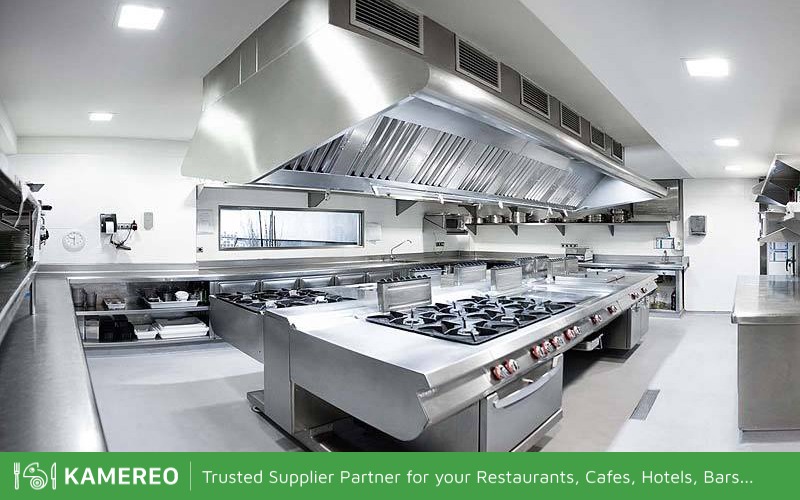
Processing Area:
- Clearly define the menu to design the processing area.
- Create areas for receiving, storing ingredients, pre-processing, cooking, dishwashing, and waste storage.
Guest Area:
- Arrange the processing area for convenience for staff and suitable for the number of guests.
- Take into account the attitude and reaction of customers to the restaurant layout.
Restaurant Management Software
A significant contributing factor to the success of a restaurant business is the restaurant management software. An efficient management application helps you organize table service for customers quickly and professionally, minimizing errors in ordering, and helps managers easily manage the entire operation of the restaurant.
Quick table arrangement:
- Servers can view the table plan by room or floor for easy table arrangement.
- Special requests from customers can be noted directly on handheld devices such as phones or tablets.
Error-free ordering:
- The order ticket is automatically sent to the bar/kitchen for processing.
- Minimize errors and confusion in the ordering and preparation process.
Accurate and quick payment:
- Payment requests from servers are automatically sent to the waiting list for payment, making it easy for cashiers to identify tables that need payment.
- The payment process is accurate and fast.
View business reports anytime, anywhere:
- Restaurant managers can track business reports and get an overview of restaurant activities remotely through mobile applications, making it convenient to monitor information at any time.
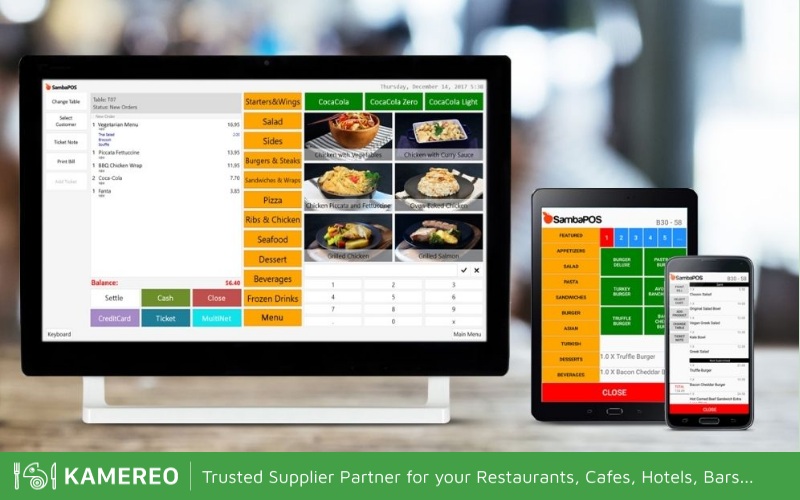
Step 7: Building a Menu for Your Restaurant
A menu is an indispensable part of running a restaurant. Therefore, designing an appealing menu significantly influences the customer ordering experience. Additionally, a well-designed menu positively impacts business operations.
Balancing Selling Prices and Food Preparation Costs
Unlike retail, restaurant dish prices aren’t fixed and depend on individual business owner decisions. However, this doesn’t mean pricing can be arbitrary. Consider the costs of ingredients and overheads to make informed pricing decisions. Typically, the selling price includes 30% to 35% for cooking and service costs.
For example, if you make grilled ribs with the cost of raw ribs at 50,000 VND per serving and additional spices at 10,000 VND, totaling 60,000 VND, you can calculate the selling price by dividing this ingredient cost by 35%. The result would be a selling price of around 172,000 VND – 175,000 VND, depending on your specific strategy.

Balancing Ingredient Quantities and Business Costs
Maintaining a balance in the quantity of dishes is crucial when building a menu. Overstocking can lead to wastage, while shortages may result in customer dissatisfaction. Discussing this with the head chef is essential for creating suitable recipes that balance thriftiness and the creation of appealing dishes.
Additionally, managing the quantity of ingredients from procurement to usage requires strict control. Clearly defining the quantity of each ingredient not only aids in better control but also helps build reference tables, forming the basis for restaurant management. For instance, meats can be measured by weight, while sauces, grated cheese, and spices are often measured in teaspoons or milliliters for accuracy and convenience.
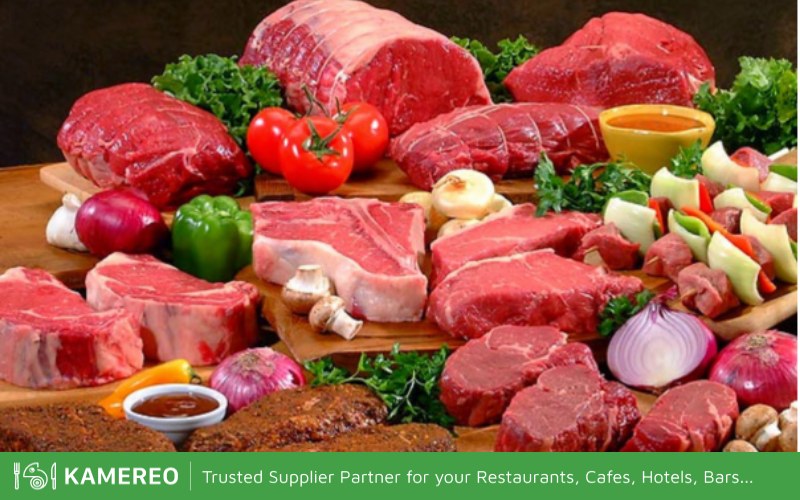
Balancing Dish Prices on the Menu
You won’t always be able to prepare every dish on your menu. Market fluctuations and seasonal ingredient prices, especially for fruits and vegetables, can make adjusting dish prices challenging. Regularly adjusting prices can affect the restaurant’s image in customers’ minds. Therefore, thoughtful consideration and balancing the menu are crucial. Have a flexible plan to address unexpected changes and adjust the menu efficiently when necessary.
Designing an Attractive and Appealing Menu
A poorly designed menu can leave a negative impression on customers. It may feature messy descriptions, lack dish categories, or omit pricing. Additionally, having an online menu is an effective marketing strategy for easier customer access. Ensure its design is attractive and well-organized.
The menu style should reflect the restaurant’s main theme, avoiding inconsistency between luxury and affordability. Dish names shouldn’t be overly complex, providing clear descriptions of main components for easy customer understanding.
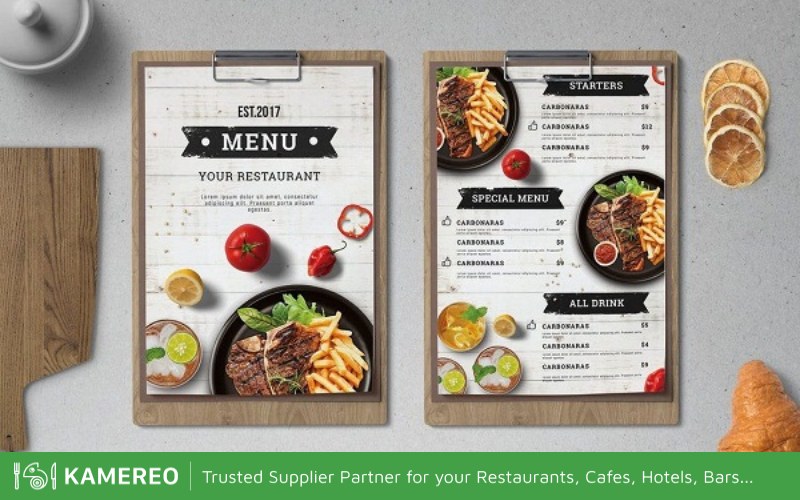
Step 8: Professional Staff
The first step in recruiting staff is defining clear goals for their achievements. The job descriptions don’t have to be complex but should detail the responsibilities of each position. Then, establish a salary policy based on industry averages, proposing minimum and maximum salaries for each role. Researching average industry salaries provides flexibility in managing wages based on employee capabilities.
Managerial Role
The most crucial position in most restaurants is the manager. Therefore, hiring an excellent candidate is vital. Relevant experience in managing one or more restaurants and establishing relationships with food suppliers is crucial.
Moreover, you want a manager with supervisory skills and the ability to reflect the restaurant’s style and personality. Starting the recruitment process at least one month before opening allows them time to familiarize themselves with the environment and advise you effectively.

Head Chef and Kitchen Staff
When starting a restaurant, you may need about three chefs, two full-time employees, and one part-time employee. Working hours can be divided from 10 am to 4 pm or from 4 pm until closing. Part-time staff is usually scheduled during peak hours, weekends, or holidays.
Servers
Service staff directly interact with your customers. They need to create a pleasant impression, work efficiently under pressure, and serve multiple tables while maintaining a fresh demeanor. All staff must understand the restaurant’s philosophy and the image you want to portray, working together to achieve it.
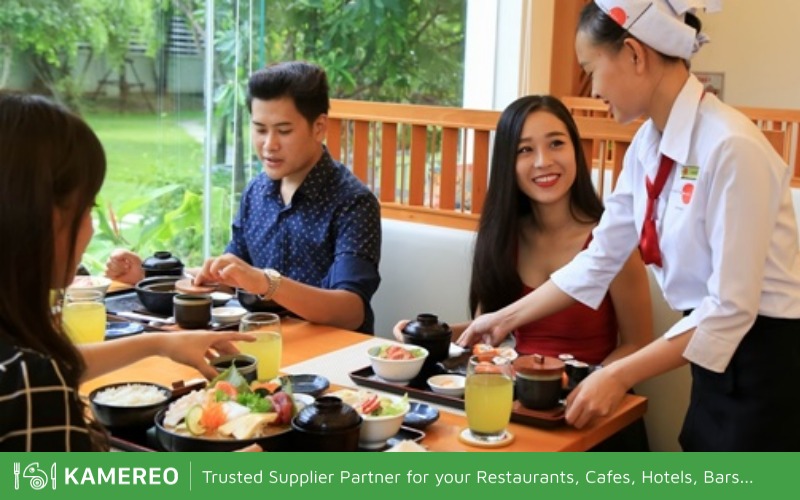
Step 9: Obtain Restaurant Business Licenses
The final process before opening your restaurant is obtaining business licenses and related documents, such as food safety certificates. For establishments serving alcoholic beverages, additional licenses for these items are required.
Thoroughly research local regulations and complete all necessary paperwork to avoid issues later on. In some cases, establishing a company is a good option to protect personal assets and create a clear distinction between business expenses and personal assets.
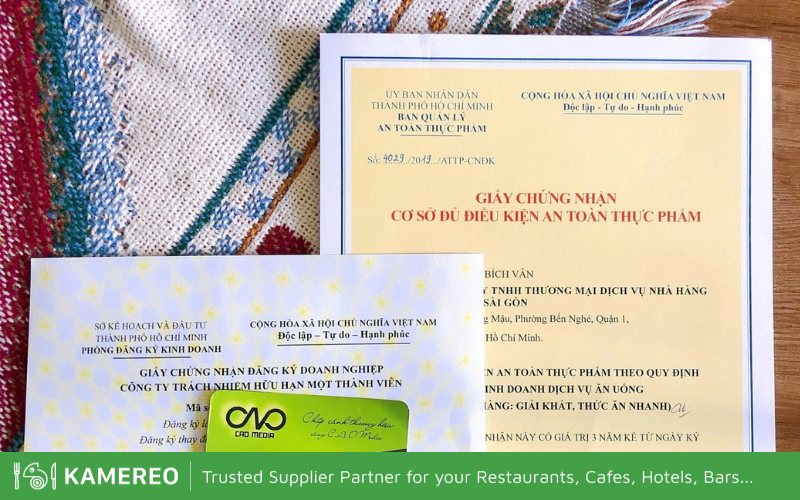
Step 10: Adhere to Food Safety Regulations
Before opening your restaurant, a solid understanding of food safety regulations is crucial. This not only ensures customer health but is also a key factor in legal compliance, demonstrating your restaurant’s professionalism.
Make sure you understand the food safety regulations set by relevant authorities. The restaurant’s reputation will suffer if customers face food poisoning issues, impacting both their health and resulting in significant treatment costs.

Step 11: Implement Marketing Strategies
To make your restaurant stand out and attract customers, creative naming is essential. The name should be innovative, easy to remember, and not duplicate other brands in the market. Register the restaurant name on culinary directories, appear in travel guides, and advertise through various media channels to increase visibility. Additionally, designing a website is an effective way to promote your restaurant.

These are detailed tips for successfully running a restaurant that many have applied and shared online. We hope this article provides useful information for you as you embark on a new journey. Follow Kamereo’s Business Tips section for more interesting insights!



